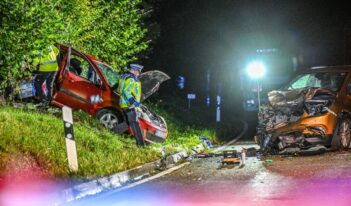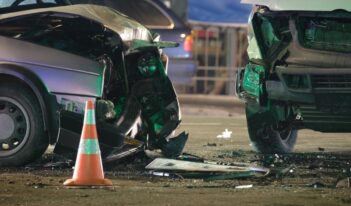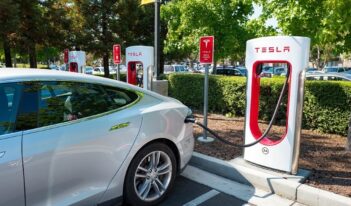
Scholar explains how NHTSA can regulate to ensure pedestrian safety.
American streets have witnessed devastating carnage over the past twelve years. During the 2010s, pedestrian fatalities increased 46 percent. That deadly uptick has showed no signs of slowing as 2021 brought another increase in pedestrian deaths.
In a recent law journal article, Gregory H. Shill, a professor at the University of Iowa College of Law, argues that failures in the regulation of vehicle design have contributed to this pedestrian safety crisis. He offers solutions that regulators can adopt to make vehicles safer for pedestrians.
The pedestrian safety crisis in the United States can be traced back to the dynamics of the U.S. vehicle market, according to Shill. He explains that consumers have preferred larger vehicles over the years and that car companies have been happy to oblige them because bigger cars are more profitable.
As a result, over the last 40 years, the weight of the average vehicle sold in the U.S. market has increased by roughly 30 percent.
These heavier vehicles, which are also taller than ever before, increase the odds of killing pedestrians, Shill explains. The height of the vehicle also makes it more dangerous to pedestrians because a taller vehicle is more likely to impact a pedestrian’s torso or head rather than legs. As a result, taller vehicles also create a disproportionate risk for children because they are more likely than adults to be struck in the head.
Although the U.S. Department of Transportation has acknowledged the danger posed by larger vehicles, Shill contends that regulators have failed to respond adequately. According to Shill, this failure results in part from the National Highway Transportation Safety Administration’s (NHTSA) focus on consumer welfare rather than the safety of pedestrians.
Shill claims that NHTSA’s focus on consumers is the product of two historical factors. The first is the emphasis that the mid-twentieth century’s vehicle safety movement placed on driver safety. The second is a long-term approach to regulations that has enabled, rather than constrained, the amount of automobile travel.
Shill argues that this focus on drivers and consumers has resulted in NHTSA’s failure to regulate vehicle size properly.
But Shill maintains that this crisis for U.S. pedestrians can end. Since 2010, other countries have seen decreases in pedestrian deaths. For example, while the United States witnessed an increase in pedestrian deaths from 2010 to 2018, pedestrian deaths in the European Union decreased by 19 percent over the same period.
The European Union took several regulatory steps that account for this success. In 2009, the European Union adopted regulations requiring manufacturers to include certain technologies designed to consider pedestrian safety, such as automatic braking systems. Ten years later, the EU adopted additional rules on vehicle manufacturing that focused on pedestrian safety technologies, including automated speed regulation” and “vulnerable road user detection.”
Although NHTSA contemplated regulations for pedestrian safety nearly 50 years ago, Shill notes that it never took any action at that time. The agency also has never implemented any rules similar to the safeguards found in the European Union.
To address the U.S. pedestrian safety crisis at long last, Shill makes four recommendations.
First, he suggests that NHTSA include and prioritize pedestrian welfare in its regulations. Shill contends that NHTSA has a sound legal basis to consider pedestrian welfare. He explains that the Motor Vehicle Safety Act of 1966, which NHTSA is charged with implementing, enables NHTSA to focus on protecting “the public,” not just drivers.
Second, Shill recommends that NHTSA follow the lead of peer nations and adopt vehicle design regulations with pedestrian safety in mind. For example, Shill describes how the European equivalent of NHTSA examines how well a vehicle protects pedestrians in the event of a collision. Shill anticipates that these sorts of safety tests will lead to the creation of new vehicle safety features, such as airbags for pedestrians.
Third, Shill proposes that NHTSA strengthen the requirements for automatic emergency breaking (AEB) and intelligent speed assistance technologies. Shill also suggests that NHTSA require that AEB testing trials be conducted in situations akin to the real-world situations that result in collisions. For example, tests should occur in low lighting conditions because four out of five instances of cars hitting pedestrians occur in low light.
Finally, Shill advises changing safety tests to reflect the differences between victims of crashes. To implement this recommendation, Shill proposes separate pedestrian safety tests both for adults of different genders and for children.
Shill concludes by reiterating that NHTSA has the ability and expertise to protect pedestrians, and argues that taking pedestrians into account would not necessitate major changes to the way the agency conducts its work.



